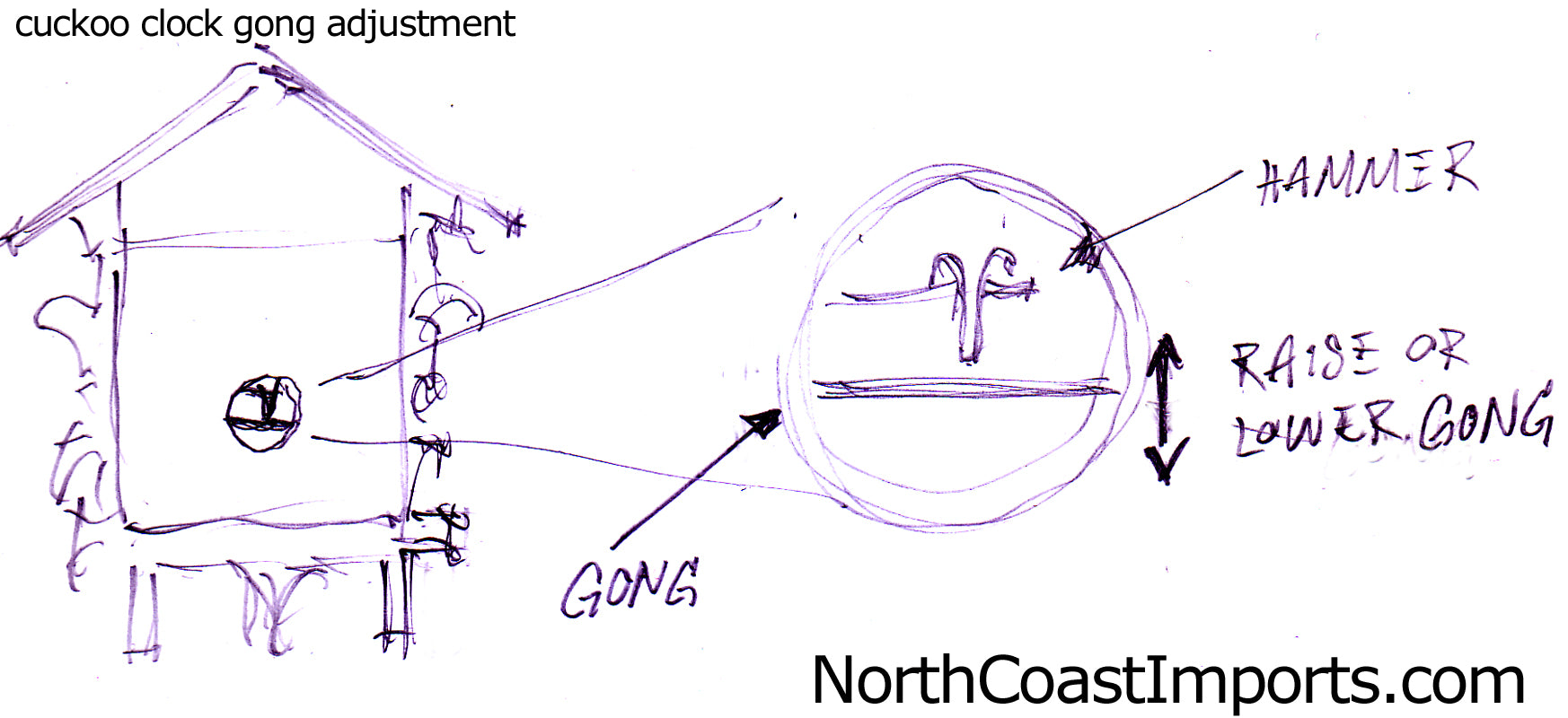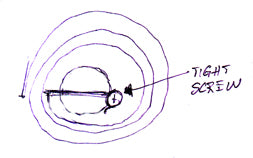Adjust your Cuckoo Clock Gong
If your cuckoo clock doesn't sound quite the same as those heard on our YouTube movies, the first thing you'll want to do is to check the position of your gong.
Before every cuckoo call, there is traditionally a gong that is struck by a mechanical hammer. This adds depth of sound to the cuckoo clock call. If your hammer is missing the gong, or if the hammer is too close to the gong, you might get a "sick" sounding cuckoo. This gong can be easily adjusted!

In the picture above, you can see the back of a cuckoo clock. There is a hole at the center of the back side through which you can see some black wires. This is the gong and the hammer. Seen from the inside, you can see the gong...

First, be sure that the packaging paper is removed from this spiral gong. Then, replace the back piece into it's slot. Check out our setup videos for more information on removing packaging and replacing the back piece.
After the back piece is set in place, you should be able to see both the hammer and the gong. The hammer should be positioned a few millimeters above the gong when at rest. If the hammer is too close, below, or caught behind the gong you won't have a healthy or resonant sound to your gong. You can carefully adjust this by moving the gong wire up or down so that the hammer is able to strike the gong properly. Be sure to move the gong VERY SLIGHTLY, up or down for maximum effect.

Be sure to check out our NEW index for tips and instructions for proper care of your clock!
Before every cuckoo call, there is traditionally a gong that is struck by a mechanical hammer. This adds depth of sound to the cuckoo clock call. If your hammer is missing the gong, or if the hammer is too close to the gong, you might get a "sick" sounding cuckoo. This gong can be easily adjusted!

In the picture above, you can see the back of a cuckoo clock. There is a hole at the center of the back side through which you can see some black wires. This is the gong and the hammer. Seen from the inside, you can see the gong...

First, be sure that the packaging paper is removed from this spiral gong. Then, replace the back piece into it's slot. Check out our setup videos for more information on removing packaging and replacing the back piece.
After the back piece is set in place, you should be able to see both the hammer and the gong. The hammer should be positioned a few millimeters above the gong when at rest. If the hammer is too close, below, or caught behind the gong you won't have a healthy or resonant sound to your gong. You can carefully adjust this by moving the gong wire up or down so that the hammer is able to strike the gong properly. Be sure to move the gong VERY SLIGHTLY, up or down for maximum effect.

Be sure to check out our NEW index for tips and instructions for proper care of your clock!
Also, if you want to make your cuckoo call a little less vociferous, you could move the gong completely out of the way of the hammer so that the gong doesn't speak at all.
ReplyDeletePLEASE! as a dedicated restorer and passionate collector, DONT go cutting holes in your antique cuckoo clocks!!!
ReplyDeleteI've been experimenting and am curious as to how to draw out the sound of the gong, make it resonate longer or make it louder-any ideas?
ReplyDeleteThank you so much for all the tips!!!
ReplyDelete